Do you struggle with Japanese cooking because you don’t have a certain ingredient in your kitchen? Or have you discovered a delicious recipe you wish to make, but do not live near a Japanese or Asian market? Or maybe you’re on a specific diet? In this post, you’ll find suggestions for ingredient substitution and some really useful resources for Japanese cooking.
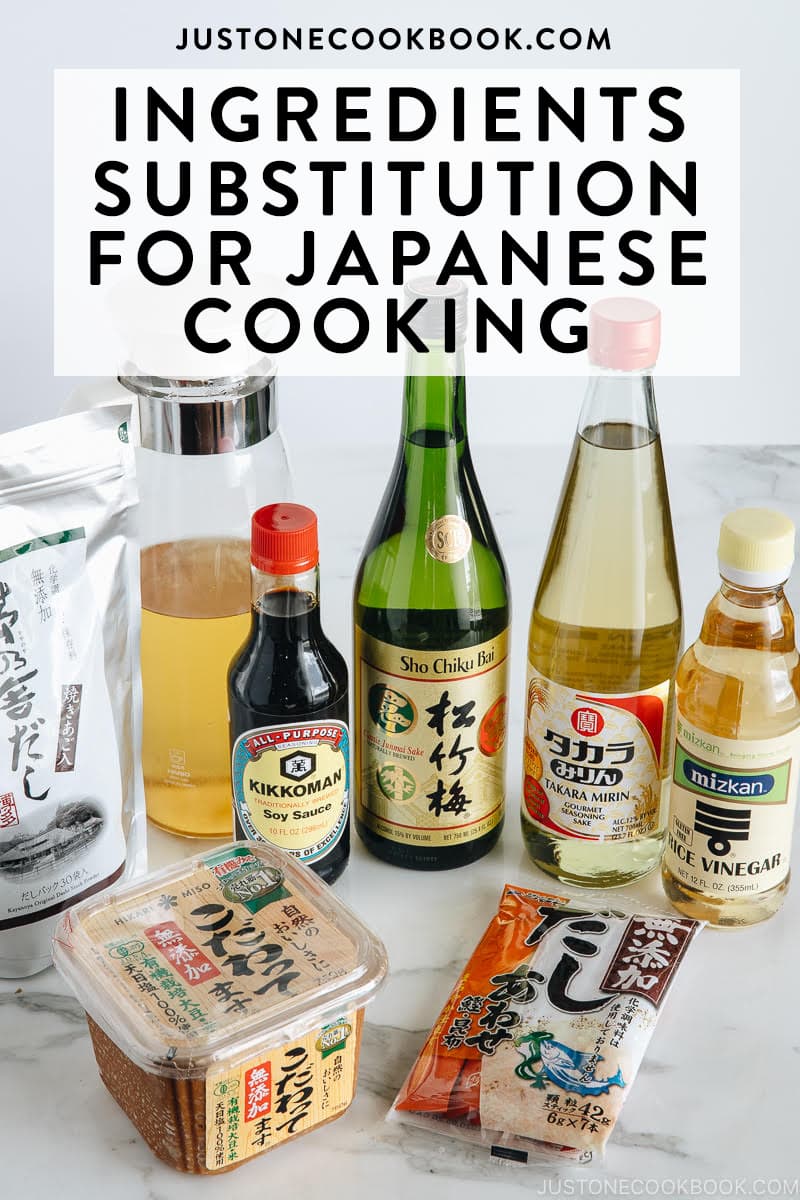
Before we start, you can learn about the most basic Japanese essential ingredients to cook Japanese dishes at home. You can also browse my pantry pages to learn more about each ingredient.
Resources for Japanese Ingredients
Depending on where you live in the world, I recommend looking up online stores to see if you can find the ingredients first, especially for cooking authentic Japanese flavors. Here are some quick resources:
- Online stores for Asian ingredients
- Local Japanese Grocery Stores Around the World (A great resource thanks to YOU!)
- Our Amazon Shop Page
Also, major grocery stores are starting to carry more Japanese and Asian ingredients these days due to the popularity of Japanese cuisine. So, do check in with the stores once in a while and you may be in luck.
Ingredient Substitutions for Japanese Cooking
When all else fails and you find yourself having to look for substitutions, you can use the list below as your guide. Please be aware that not all substitutions are going to yield the authentic Japanese flavors you’re looking for, but they will allow you to enjoy Japanese dishes at home nonetheless.
For my recipes on Just One Cookbook, I often include more suggestions for fresh ingredients in the write-up where you can work with local ingredients. And don’t be afraid to experiment and try things out.
If you wish to learn more about the specific ingredient, click on the link and it will lead you to a more thorough article on the uses, storage, and shopping. Otherwise, you’ll find your quick answers below.
Condiments
Dashi (Japanese stock)
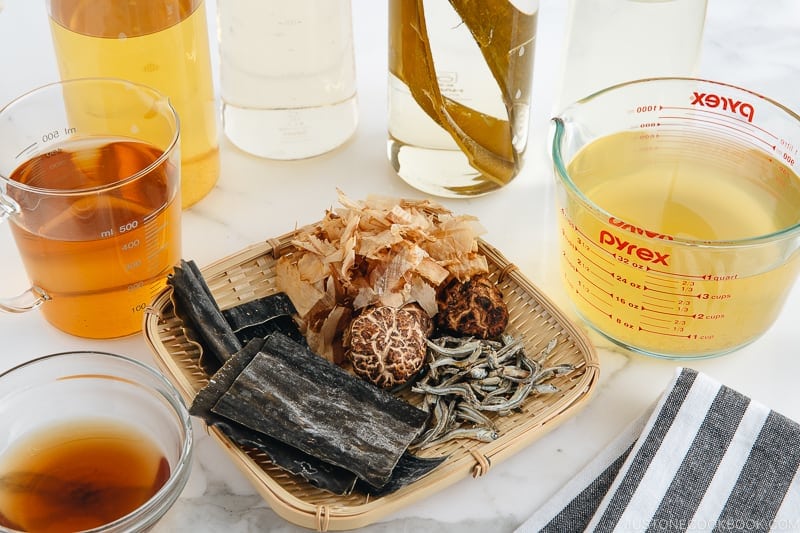
Dashi is the fundamental of Japanese cooking and without it, you can’t produce authentic flavors. The good thing is dashi is super easy and simple to prepare (just need 30 minutes or less). All you need is water, kombu (edible kelp) or/and dried bonito flakes (katsuobushi). You can choose one of 3 ways to make dashi.
If you are vegetarian, make Kombu Dashi or Shiitake Dashi. You can use dashi packet (tea bag style) to cut down on time. Learn more about different types of dashi here.
Mirin (Sweet Cooking Sake)
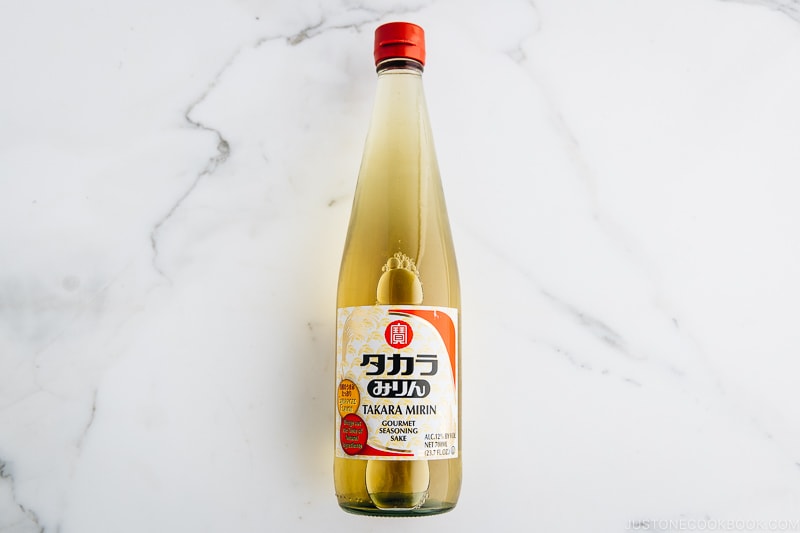
Suggested substitution: 1 Tbsp mirin = 1 Tbsp water (or sake) + 1 tsp sugar. Do not substitute with rice wine vinegar.
Sake (Japanese Rice Wine)
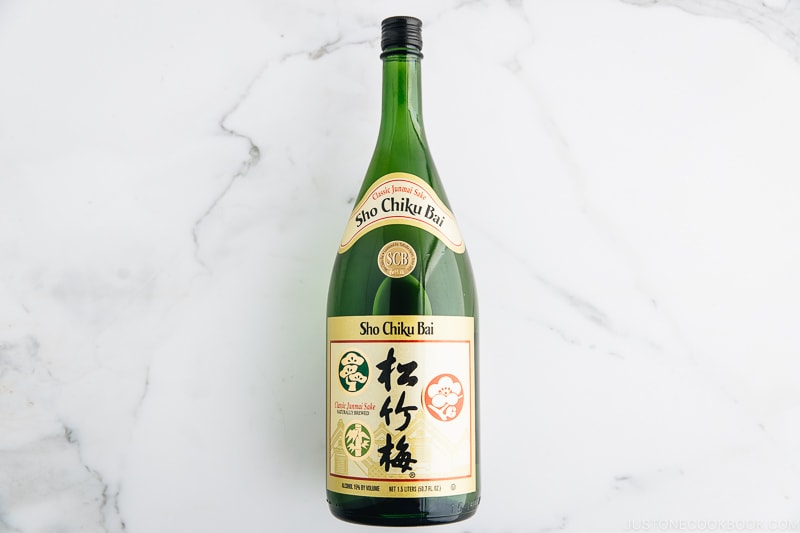
Suggested Substitution: Dry sherry, Chinese or Korean rice wine, or water. Do not substitute with rice wine vinegar.
* Click here to learn more about Sake and Mirin (and benefits of cooking with them)
Miso (Japanese Fermented Soybean Paste)
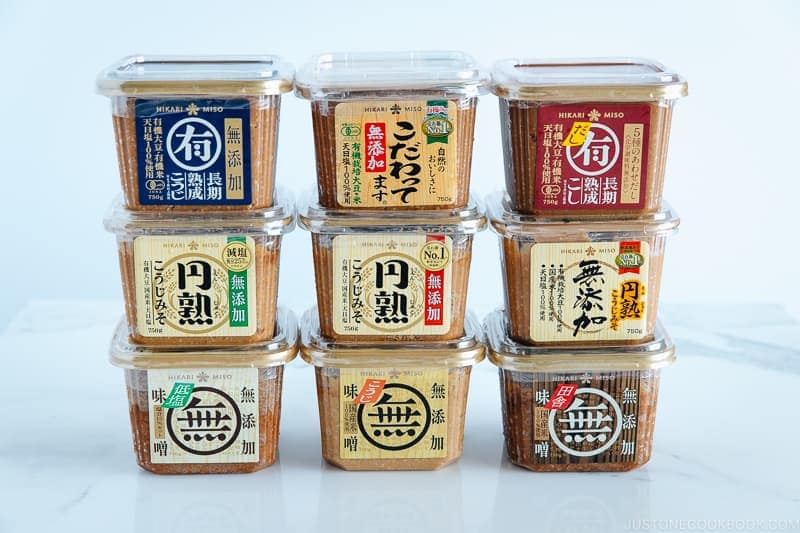
Unfortunately, there is no substitute for the flavor of miso. I don’t recommend Korean Doenjang (soybean paste) as they have a different taste. If you’re allergic to soybeans, you can purchase chickpea miso.
Rice Vinegar
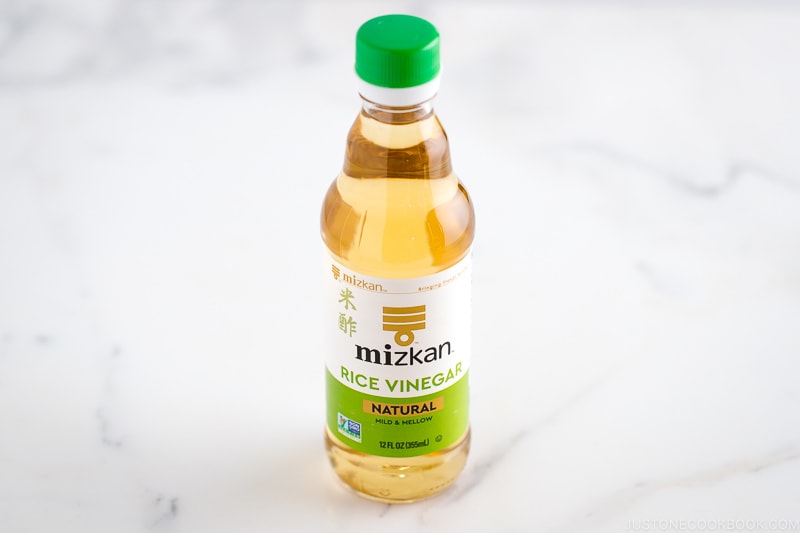
Suggested substitution: White vinegar (tangier and stronger) or apple cider vinegar (mild, but it has a faint apple flavor). You may want to use less for what the recipe calls for or dilute with some water.
Soy Sauce
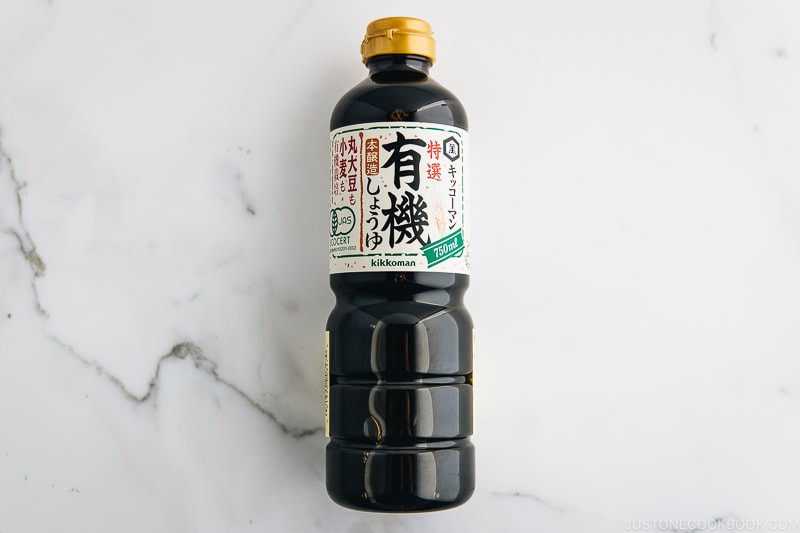
Ponzu (Citrus Soy Sauce)
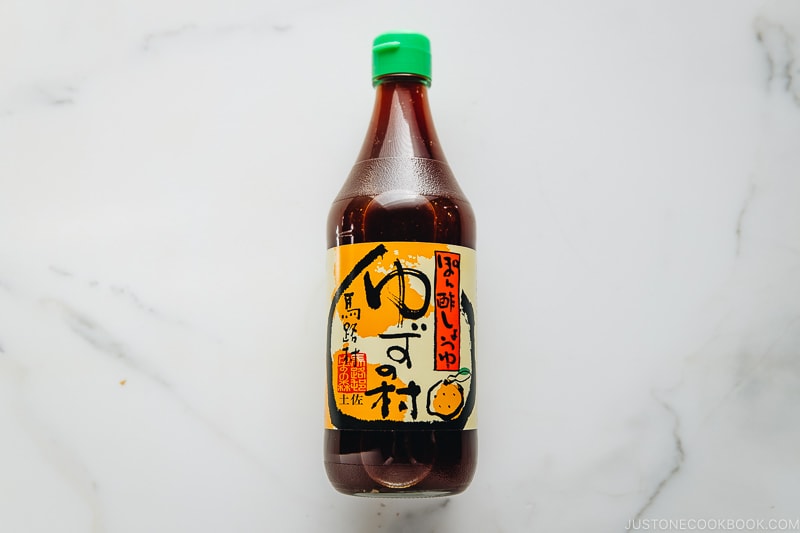
Suggested Substitution: If you cannot find Ponzu in your local Japanese or Asian grocery stores, you can make Homemade Ponzu or mix soy sauce with citrus (lemon/lime) for a quick substitution.
Shichimi Togarashi (Japanese 7 Spice)
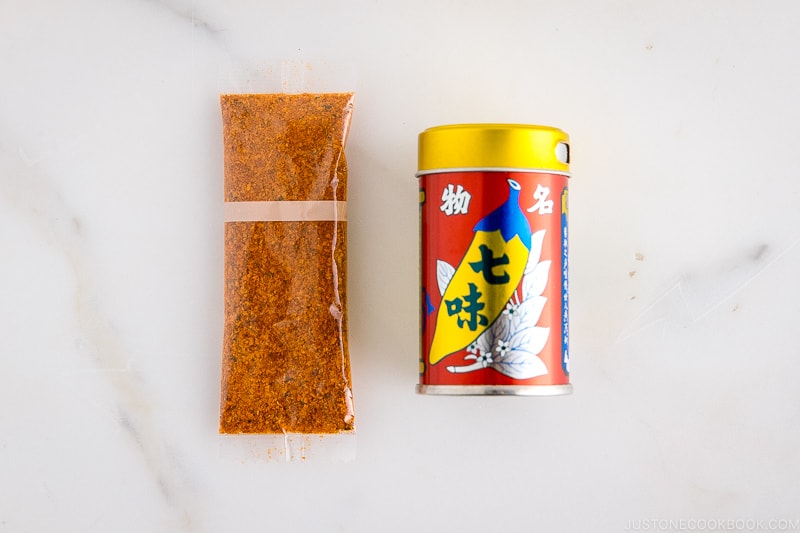
Suggested Substitution: If you cannot find Shichimi Togarashi to sprinkle on your dish to spice up, you can use Ichimi Togarashi or any other chili spice you have. If you don’t need to make it spicy, simply skip.
Dry Ingredients
Japanese Short Grain Rice
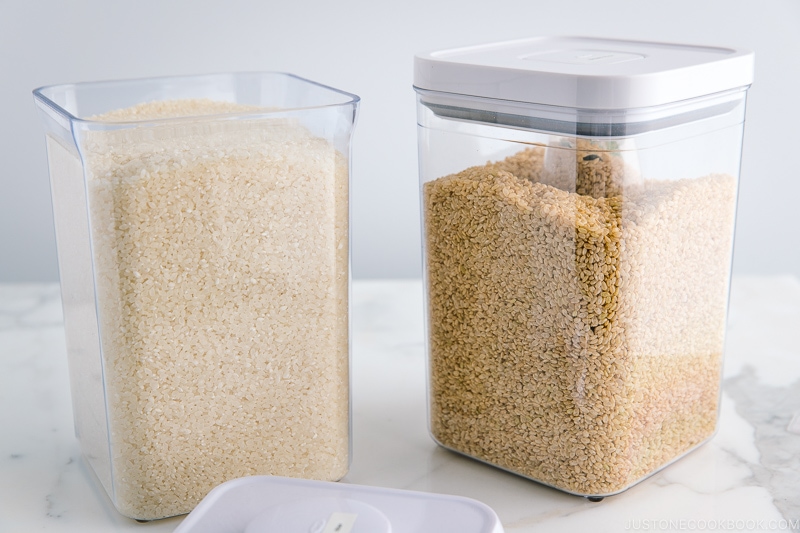
We do not recommend using Jasmine rice to substitute with Japanese rice. The closest replacement would be Korean rice. Please click on the title to read more about Japanese rice where we talk about the differences and what brands of rice to buy.
Panko
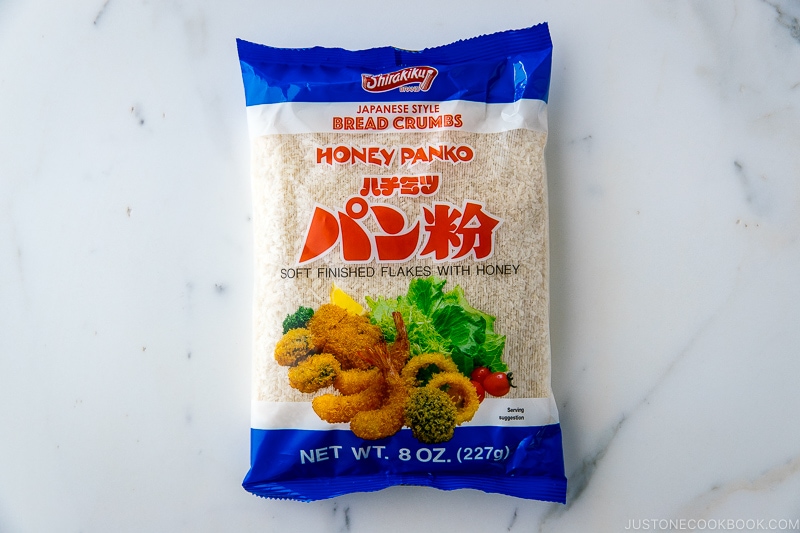
Suggested Substitution: Regular American breadcrumbs, but it will be less flaky and light.
Potato Starch
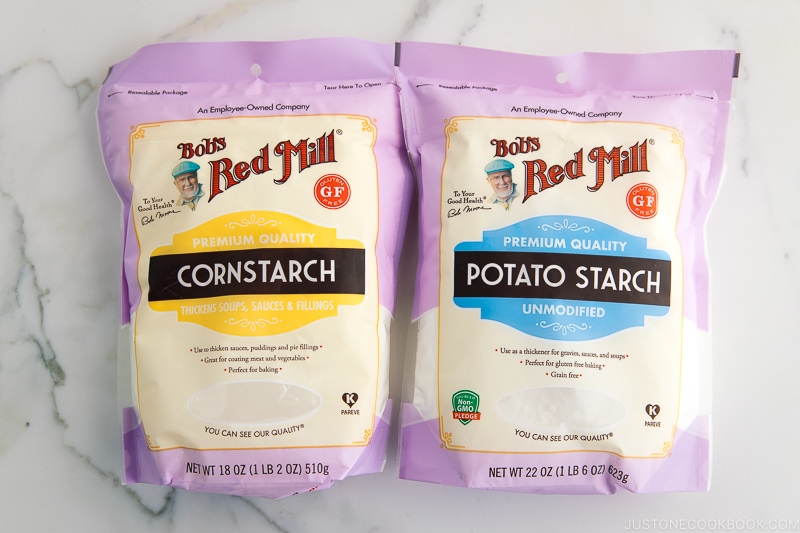
Suggested Substitution: Cornstarch, but not other starch like tapioca starch.
Shiratamako
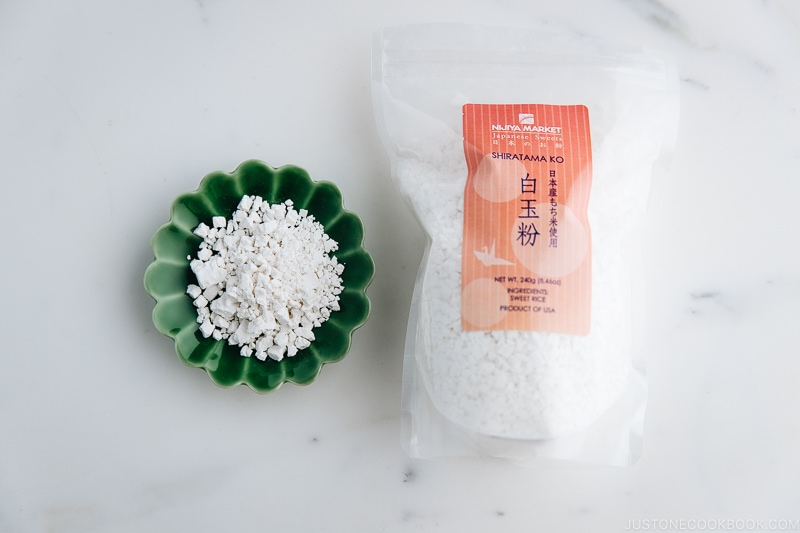
Suggested Substitution: The best substitute is Mochiko, made from the same short-grain glutinous rice flour but processed differently to create a slightly different texture.
Japanese Curry Sauce Mix (Roux)
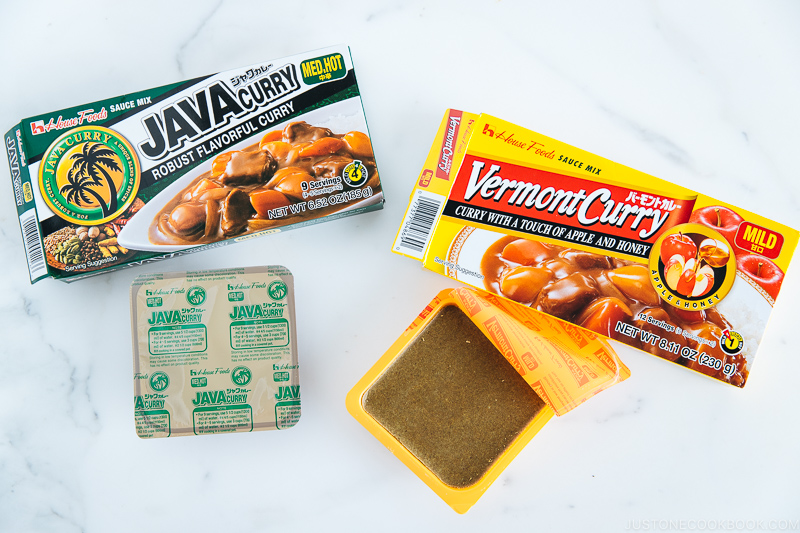
Suggested Substitution: There is no exact substitution for this; however, you can make it from scratch following my Japanese Curry Roux tutorial. The homemade one is best!
Meat + Fish + Protein
Thinly Sliced Meat
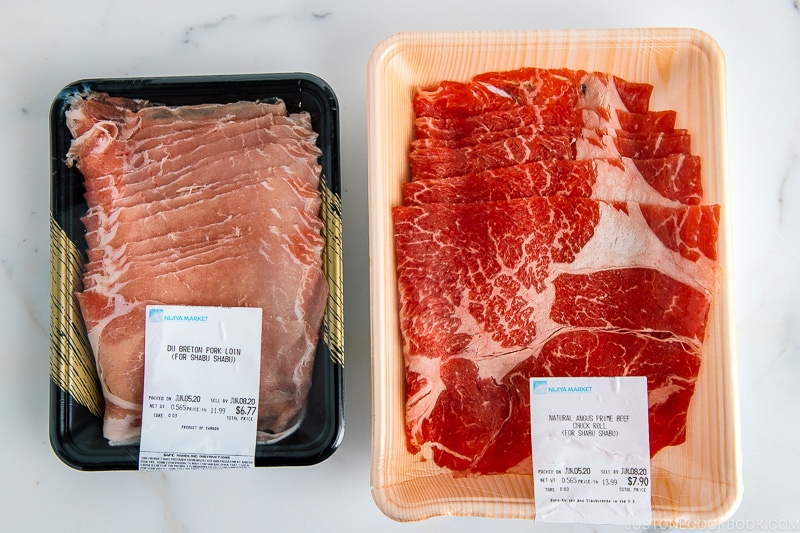
Japanese often use thinly sliced meat for cooking Shabu Shabu and Sukiyaki. If you can’t find ready-sliced meat, buy good quality meat and follow this tutorial with video to slice your own.
Aburaage (Fried Tofu Pouch)
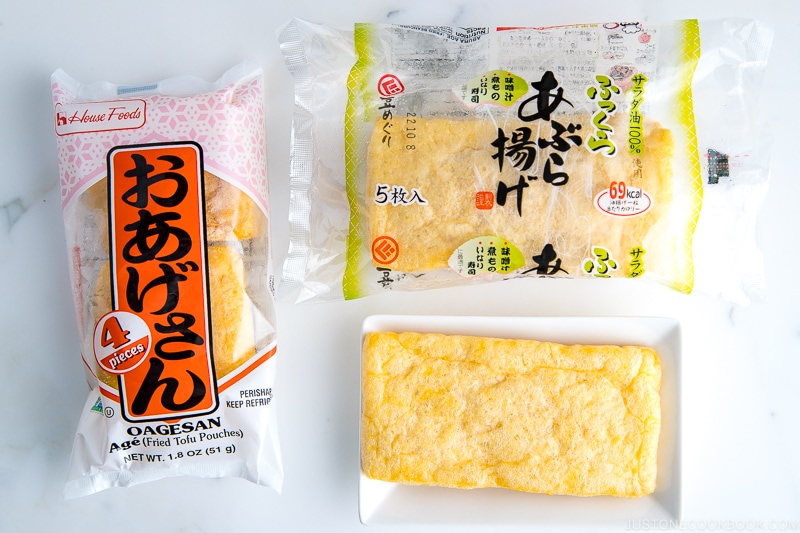
Suggested substitution: Depending on the recipe, you can use crispy tofu puffs (fried tofu cubes) or regular firm tofu.
Kamaboko (Fish Cake)
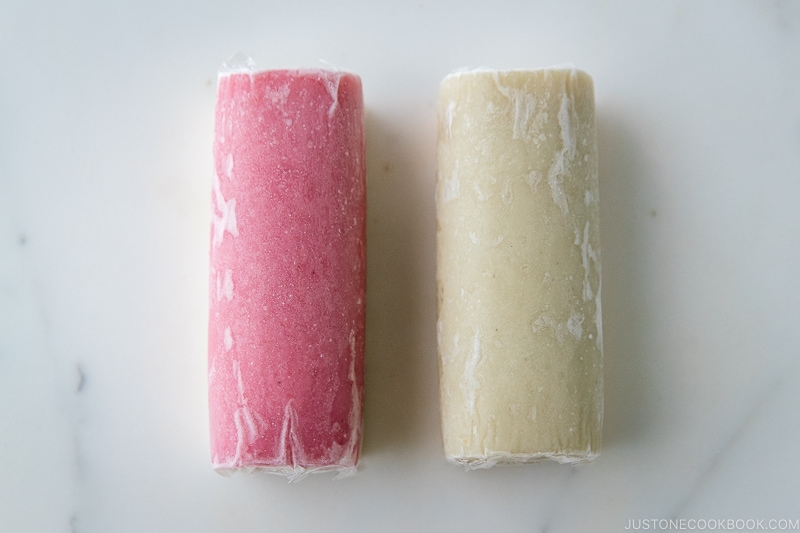
Suggested substitution: Use similar fish cakes found in Asian grocery stores. Or leave out and use fresh white fish fillet/ shrimp for hot pot and noodle soup recipes.
Produce (Fresh Vegetables)
Daikon
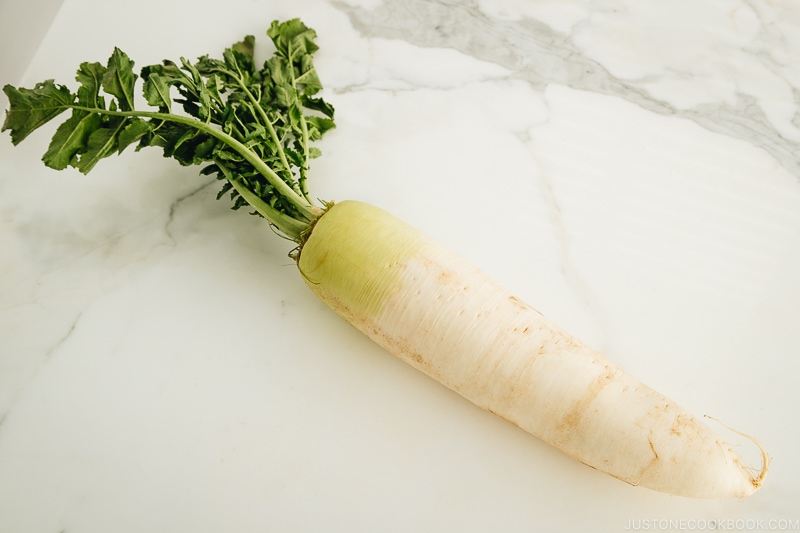
Suggested substitution: For any simmered dishes, you can use turnips or other root vegetables with a similar texture.
Gobo (Burdock Root)
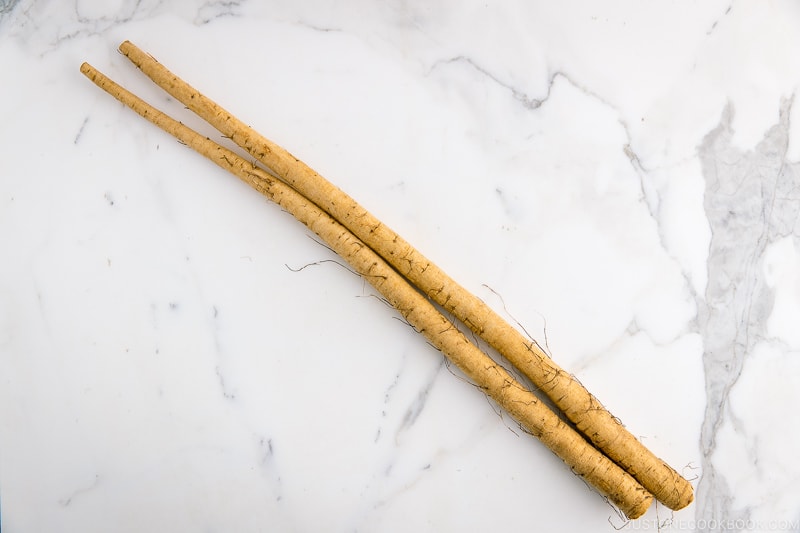
Suggested substitution: Any similar crunchy root vegetables.
Kabocha Squash
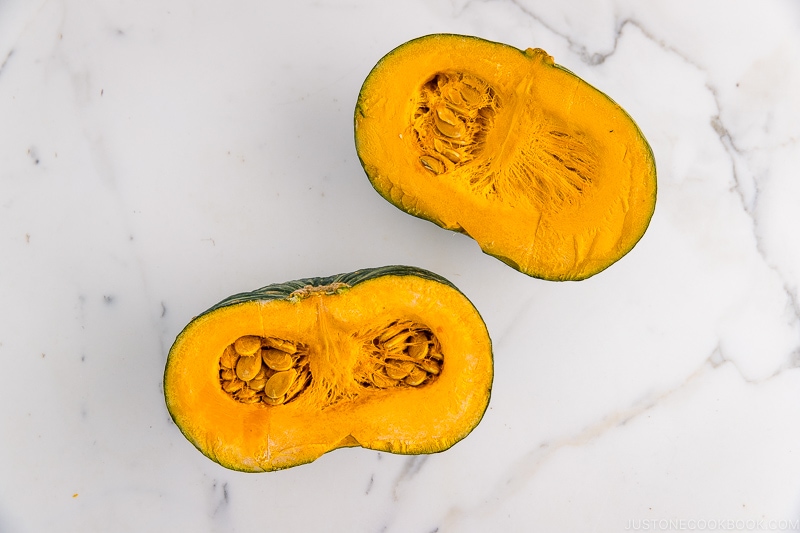
Suggested substitution: Butternut squash or acorn squash, however, they are less sweet than kabocha. For baking, you can also mix in sweet potato with butternut squash if the recipe calls for kabocha squash.
Lotus root (Renkon)
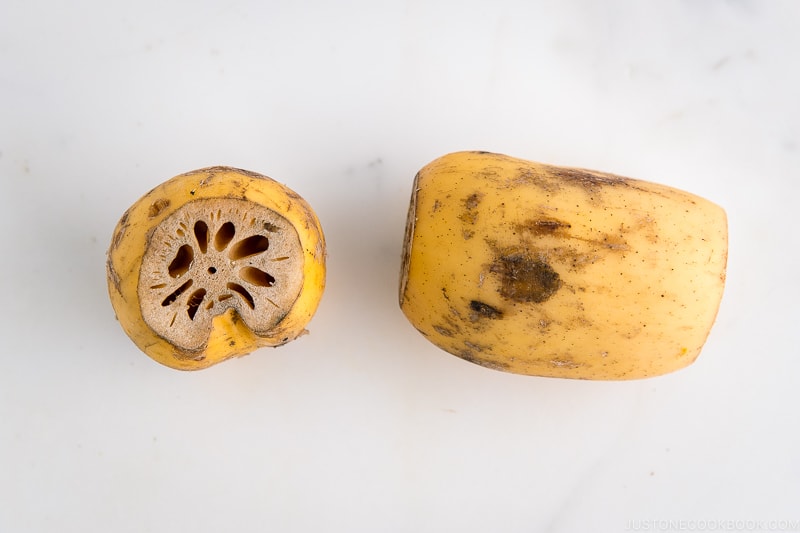
Suggested substitution: Any similar crunchy root vegetables. You may find lotus roots in Chinese or Korean grocery stores.
Mitsuba
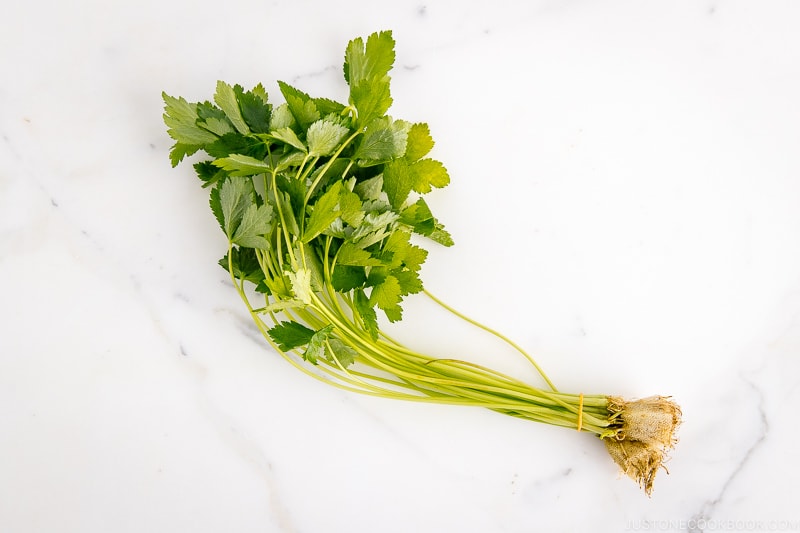
Suggested substitution: Unfortunately, there is no herb that tastes like mitsuba. The texture of the mitsuba stems is very similar to the ones of cilantro. You can sprinkle some chopped cilantro (use stem part more than leafy part). Please use green onion/scallion or chives to garnish your dish. For recipes such as salads or rice dishes, you may replace mitsuba with an arugula or watercress (chop it up).
Another option is to grow your own. Similar to other herbs, you can grow it easily from seeds. The seeds are available online here.
Negi (Long Green Onion)
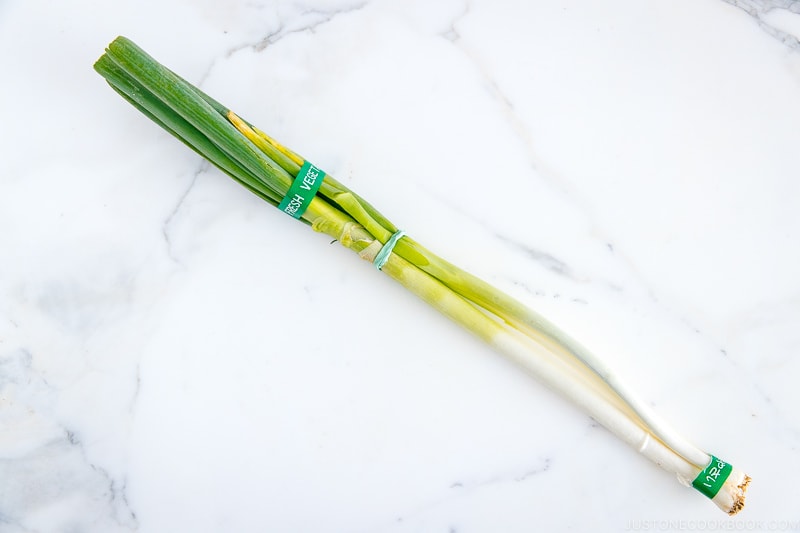
Suggested substitution: The taste of Negi is close to green onions/scallions, but it has a thicker stalk similar to a leek. You can sub it with leeks for the texture or use more green onions/scallions.
Nagaimo
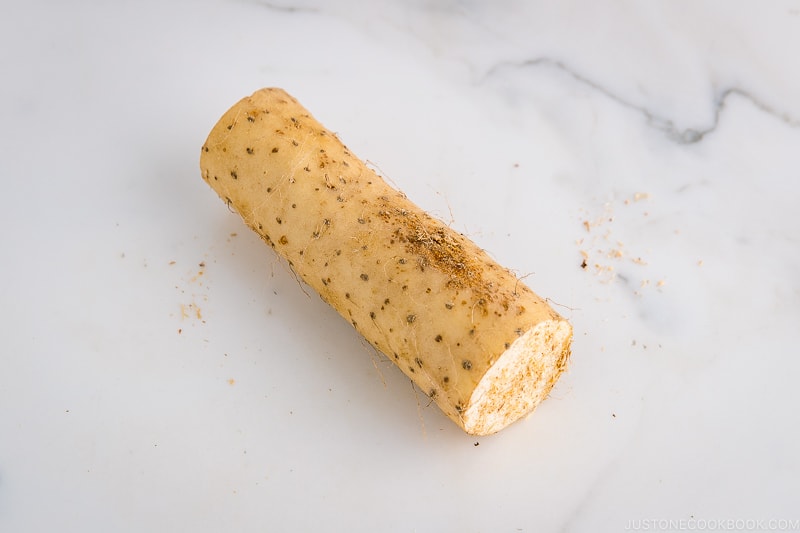
Suggested substitution: Some readers say grated potato can be used for grated nagaimo in the Okonomiyaki recipe but I have to disagree after I tried it myself (read the post). I suggested a few better substations in the post. We may be able to use grated taro as well but don’t consume raw and make sure to cook it.
Shiso
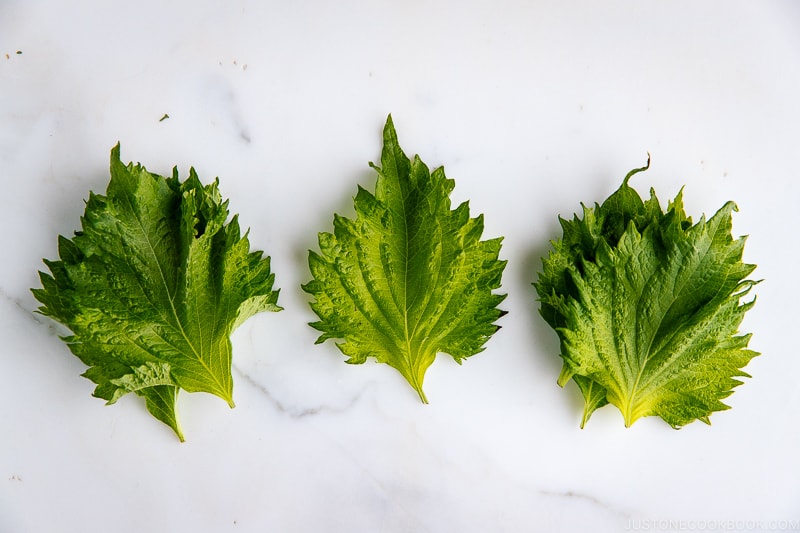
Suggested substitution: Unfortunately, there is no herb that tastes like shiso. The closest substitute is perilla leaf which you can get from a Korean grocery store.
If you have a garden, you can also try growing shiso. The seeds are available online here and here.
Japanese Sweet Potato (Satsumaimo)
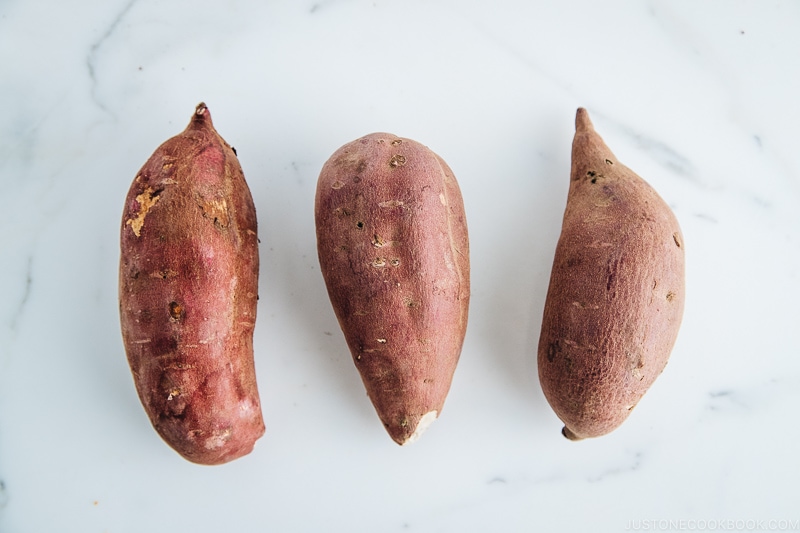
Suggested substitution: You can use American sweet potato (more orange color), but it’ll be less sweet. Adjust the sweetness with sugar, mirin, or other alternatives.
I hope I’ve covered most of the important ingredients for Japanese cooking. If you have a question or have a suggestion for any of the ingredients above, please do not hesitate to leave a comment here. We welcome your feedback and input anytime!
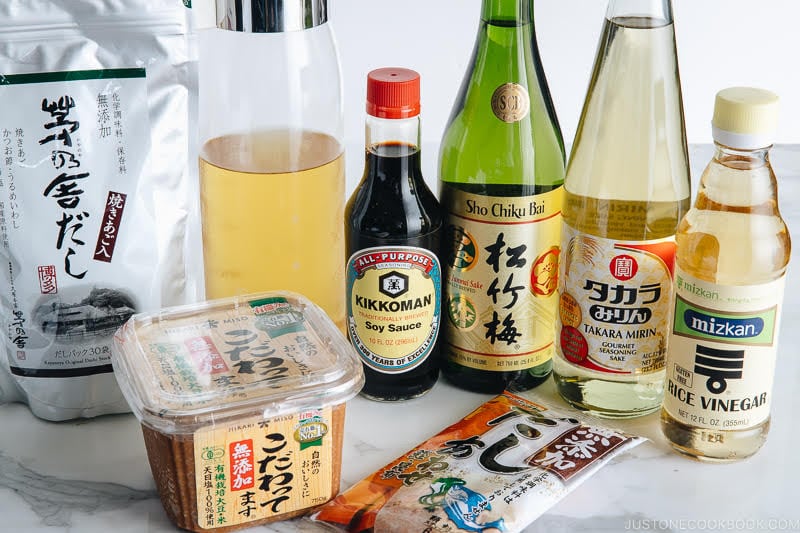
Wish to learn more about Japanese cooking? Sign up for our free newsletter to receive cooking tips & recipe updates! And stay in touch with me on Facebook, Pinterest, YouTube, and Instagram.










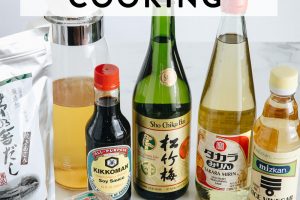
Thank you for you step by step cooking classes and discovery of delicious meal.
Hi Laila!
It’s a pleasure! We are happy to hear you enjoy it.
Thank you for trying Nami’s recipes and for your kind feedback.😊
Hello, thanks for your wonderful tips! I’m from Brazil and some of the ingredients are hard to find in here. I’m studying to prepare your recipe of Spicy Shoyu Ramen, but we can’t find doubanjiang in here, is there any substitute?
Hi Malu!
Thank you very much for trying Nami’s recipes from Brazil!
Doubanjian is sometimes called Chili Bean Paste/Sauce, 辣豆瓣酱. A fermented bean paste with red chili peppers is the key ingredient for the Spicy ramen.
We are unsure what is available in your area, but we hope you can find at least Bean Paste and add Chili flake for the spiciness.
Hi Namiko. Would you please advise an on-line site where I may order Asian chicken stock.
Hi Vicki!
Here are a few items available online;
https://amzn.to/2IQBOjy
https://amzn.to/3kH3JzZ
But we highly recommend Nami’s recipe; https://www.justonecookbook.com/homemade-chicken-stock/
Can I use Gochujang(fermented red pepper) paste in place of the miso? I know it is quite spicy, but I love it.
Hi Lisa,
Miso and Gochujang are different. There is no appropriate substitute for miso.😔
You can learn more about Miso in this post; https://www.justonecookbook.com/miso/
Hope this helps.
Love your recipes, so far have enjoyed everything. Just a few questions: do you have any substitutions for wheat? Noodles and some ingredients you use are not certified GF, so very difficult for celiacs.
Also, I have recently found out that all rice, including organic, have large amounts of arsenic in them. Check it out! It is suggested that all rice be soaked overnight, at least 8 hours and washed thoroughly, you can get rid of 60% that way. Of course, it affects the water ratio when cooking. Just thought you should know as you mentioned that you eat it every day.
Hi Melody!
Thank you for trying JOC recipes! These days, there are many gluten-free noodles made from non-wheat flour (rice flour, etc.).
Please feel free to use GF ingredients for your needs.🙂
Hi mam/sir i love to learn how to cook Japanese food recipe.. How can i avail your recipe book?
Hi Nadia,
We have many recipes and information about Japanese cooking on this website for free to you. If you are interested in purchasing our book, Nami has an ebook you can order here (https://www.justonecookbook.com/just-one-cookbook-essential-japanese-recipes/). If you are looking for a print version, we have it available on Amazon (https://amzn.to/35Ahqge). Please note that these books contain only the basic recipes.
Thank you!🙂
Is there any miso that is not made with soy beans. I am allergic and miss miso so much!
Hi Janis! We haven’t tried making or tasting, but people make miso with chickpea, etc. https://great-eastern-sun.com/shop/miso-master-miso/miso-master-organic-chickpea-miso/miso-master-chickpea-miso/ There are a few other brands you can purchase. Hope this helps!
hi Naomi,
what would you say is a good substitute for karashi mustard in the recipe for pickled cucumber? Is it ok to skip it?
Thank you,
Jerry
Hi Jerry! I mentioned the substitute suggestion in the recipe already, right next to the karashi in the ingredient list. 🙂
You can substitute with Chinese mustard powder or Colman’s English mustard which are made from a hot, yellow variety of mustard seed similar to Japanese mustard.
Is there a substitute for SHICHIMI TOGARASHI ?
Hi Ann! Shichimi togarashi is a mix of different spices, so there is no exact substitute for it. However, any chili pepper can do, or if you can find Ichimi Togarashi that’s okay too (spicier). 🙂
Where can I get for sushi?salmon roe such as one would use for sushi? I live in South Florida and have hunted what seems like everywhere and cannot find it. I tried using salmon caviar, but it was nothing like what I want and in fact was to me disgusting.
Also, where or how can I find ika? I love ika salad, but the only place I seem to be able to get it is at my favorite local sushi buffet or at a Korean market, Woo Sung, in Orlando (200+/- miles away). Does it comes frozen? Canned? Can I get ika alone and make the salad myself or does it come already made?
Hi Lorraine! Have you tried Catalina Offsure Products (https://store.catalinaop.com/)? They ship domestically. I wish I know a good local shop in the Florida area but I’m not familiar. 🙁
My wife tries not to eat added sugar, and I find almost everything has a few tsp of brown or white sugar in them. Recommendations on substitutes? We’ve tried a little honey or syrup before, or just omitting.
Hi Scott! Unfortunately, Japanese cooking requires soy sauce and miso which is fermented condiments that require salt to make. Therefore, to counterbalance the flavor, it always requires some sweetness, although that can be adjusted based on your preference. If you omit sugar completely, it will be just salty. You can use honey or maple syrup as healthier option and adjust according to your liking. Another way is not to overuse the sauce. Often times, western-influenced Asian food tends to have too much sauce compared to the original food. Especially in Japanese food, we care about the natural ingredient taste, and we do not overpower with the sauce and seasonings (maybe there are exceptions though). So I’d say consider less sauce in general and still enjoy the great balanced flavors. 🙂
My son came home from a trip to Tokyo with a determination to make some of the delicious meals he had there. I also got interested after he gave me some curry roux he purchased (I made your Japanese chicken curry recipe–very good!). I have been following your blog and printing your recipes to discuss with him and try myself. On his birthday a few weeks ago, I gave him a donabe, rice and soup bowls and chopstick holders that I ordered directly from Japanese companies. We also split an online order of dashi packets.
As a novice Japanese cook with a small family (my husband and me), I want to have authentic ingredients but also don’t use a lot, volume-wise. Your info on substitutions is very helpful. My question relates to the many types of miso — is there one or two types of miso that I can use in most recipes?
Hi Anne! I’m so fascinated to hear your story about your son’s trip and your cooking with him. What a wonderful experience you two have! Thanks for trying out my recipes. Now, the miso… My favorite miso is Hikari Miso Kodawattemasu, which I shared in this post.
https://www.justonecookbook.com/miso/
Miso is personal thing… from hearing my readers, I think a lot of people love white miso and same amount of people love red miso… so it comes down to personal choice? Kodawattemasu is Koji Miso which is sweeter (more koji). Not super sweet, but the sweet tone in saltiness. I’m not sure if you can purchase this particular one, but just in case you can, I wanted to mention it. I love Hikari Miso products (I try all their miso) and if you can find your favorite, it would be nice. I get bored with the same miso taste (as we drink miso soup every day), so I use different ones and keep several at home. 🙂
Hi, thank you for these great tips!
What could I substitute kombu with for your Furikake rice seasoning recipe?
Hi Armand! If you don’t have used kombu, then you can skip adding kombu. Add nori (dried seaweed) and sesame seeds. 🙂
Hi, Thanks so much for your lovely recipes. I follow your blog from India and need a little help with ingridients.
I got a bottle labeled cooking sake, that says it is a “cooking sake vinegar” at the back of the bottle. Now I can’t figure if this is the right thing to use. This is from amazon.in and the brand is called Sakura.
The available Mirin is labeled hon mirin but again says vinegar at the back. So confused. Please help
Thanks
Akshat
Hi Akshat,
Thank you very much for supporting us from India!
Sake and mirin are different from the vinegar and it shouldn’t taste vinegary. Please consider mirin as sake + sugar, so it’s sweet.
I hope this helps!
Hi, can I substitute tapioca flour with Cassava flour on your pon der ring donut recipe?
Hi Tasnim,
The Tapioca flour and Cassava Flour are a little different. Tapioca flour is only the starchy part of the Cassava root and does not contain much fiber as Cassava Flour. So it will change the texture of the donut.
However, we have never tested it Pon Der Ring Donut recipe with the Cassava flour before, so we’re not sure how the outcome will be… please let us know how it goes! 😉
Is there a substitution for unagi?
Hi Julie! I used a catfish for this recipe and I wouldn’t say it tastes the same, but it is a good substitution.
https://www.justonecookbook.com/catfish-kabayaki/
Namisan,
I truly enjoy your sharing of Japanese cuisine, both traditional and new, to the American culture. Your additional information on tips is outstanding!
Although I am not restricted to any food ingredients I tend to be more vegan. Can you introduce or share recipes of this type of cooking to our Western culture? I will sincerely appreciate any comments or suggestions as well. Thank you
Hi Earl! Thank you so much for your kind words. I’ve started to introduce more vegan/vegetarian side dishes (some dishes are easily convertible by omitting the non-vegan ingredients).
https://www.justonecookbook.com/tags/vegan/
I’ll add more! 🙂